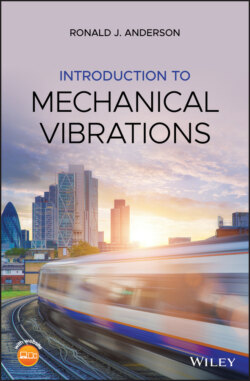Читать книгу Introduction to Mechanical Vibrations - Ronald J. Anderson - Страница 16
1.1.3 Lagrange's Equations of Motion
ОглавлениеIn this section, we consider the use of Lagrange's2 Equations of Motion.
Lagrange's Equations, since they are based on work/energy principles, give the analyst two distinct advantages when deriving the equations of motion. First, the vector kinematic analysis is shorter than it is with a direct application of Newton's Laws since acceleration vectors need not be found. This is because the kinetic and potential energy expressions can be derived from velocity vectors and position vectors respectively. Secondly, there is no need to draw free body diagrams for each of the rigid bodies in the system because the forces of constraint between the bodies do no work and are therefore not required for the analysis.
Of course, there are also disadvantages. The method requires a great deal of differentiation, sometimes of relatively complicated functions. Some analysts prefer the kinematics of Newton's method over the differentiation required when using Lagrange's Equations. Some point to a lack of physical feeling for problems without free body diagrams as being a disadvantage of the method. Finally, if the intent of analyzing the dynamics of a system is to predict loads, which could be carried forward into a structural analysis for instance, the forces of interaction between bodies are not available from a straightforward application of Lagrange's Equations.
